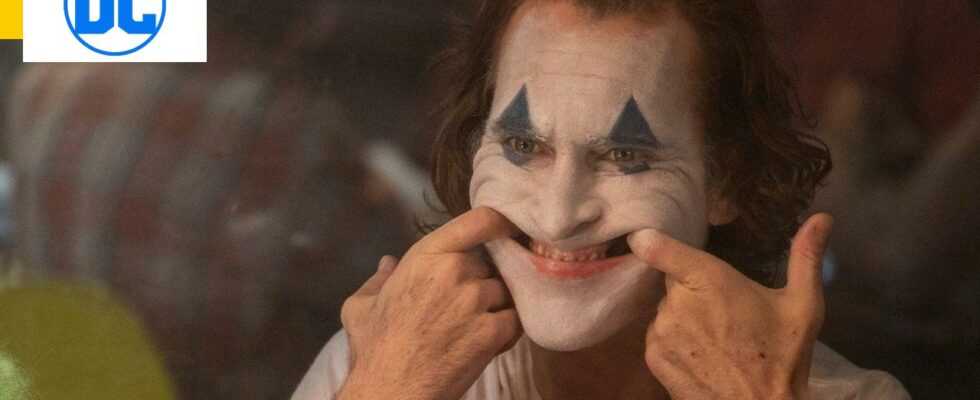In his masterful composition as a tortured Joker, Joaquin Phoenix also reveals a character with the pathology of prodromal laughter. Where we discover that the expression “to die of laughter” is not entirely without foundation…
Nervous, hysterical, defensive, moved, squeaky, forced… These are not the adjectives that are missing to qualify a laugh. In the case of the Joker’s, it’s demented laughter; a crazed, painful laugh, which each of the on-screen character’s performers strove to make their own.
We remember of course that of Jack Nicholson; that, incredible and disturbing, of Heath Ledger, extraordinary in The Dark Knight. We must now also take into account that of Joaquin Phoenix, phenomenal in his role. A role for which he confides having questioned himself for a long time before accepting it.
“If I couldn’t find the Joker’s laugh, I might as well drop it!” explained the actor in an interview with the magazine Première, in its September 2019 issue. “I called Todd to ask him to come by the house: ‘I’m going to try laughing in front of you, so if that doesn’t work, we’ll be fixed’. He came over, and it was excruciatingly embarrassing, because he was on the couch watching me, and it took me a quarter of an hour for that fucking laugh to come out. He said to me: “You know, it doesn’t matter if you can’t do it. You already have the role”. But I wanted to do it. To be sure. It was one of the defining moments.”
Below, a little compilation of his laughs, edited from the trailers…
To find inspiration, the actor admitted to having spent hours watching videos of patients with personality disorders. “I’ve watched videos of people suffering from pathological laughter, a neurological disorder that causes people to laugh uncontrollably”. This pathology has a name: prodromal laughter.
Prodromal laughter, késako?
First described in the Neurological Review in 1903 by Charles Féré (1852-1907), a French neurologist who practiced at Bicêtre Hospital, this disorder refers to pathological, irresistible and pointless laughter, announcing the occurrence of a stroke. In France, this pathology was recently mentioned by neurologists from the Rouen University Hospital, in an article published online on September 21, 2018 in The Journal of Emergency Medicine.
Pathological laughter is observed in particular in cases of multiple sclerosis, pseudobulbar palsy (due to damage to the medulla oblongata which connects the brain and the spinal cord), tumours, amyotrophic lateral sclerosis (or Charcot’s disease, a degenerative disorder of the spinal cord).
The “pathological giggle” occurs, meanwhile, as the very first manifestation of a stroke. This is a transient symptom, lasting from a few seconds to 30 minutes. It can be observed in strokes that are ischemic (by obstruction of an artery) or hemorrhagic (associated with the rupture of a vessel).
In an article titled Neurology of laughter and published in the Swiss Medical Journal in 2008, chronic pathological laughter and crying are defined as follows: “Inadequate uncontrolled laughter and crying of abnormal intensity with a lack of appropriate subjective affect. […] Subjectively, pathological laughter and crying are often experienced as very distressing and disabling. Patients, however, only rarely verbalize the problem spontaneously; therefore the doctor must approach it in a targeted manner.
Treatment with antidepressants […] is most often effective. […] Inadequate, unnaturally operating or abnormally lacking laughter and smiling can also be caused by emotional disturbances for which both neurological and psychiatric causes arise.
Below is a video example of a person with pathological laughter syndrome; in this case caused by pseudobulbar paralysis, caused by lesions in the central motor neurons. Be careful, the images are likely to offend you and are disturbing.
Neurologist in activity, Patrick Verstichel is the author of a fascinating post on the subject, entitled “The causes of prodromal laughter”, posted on the popularization site Futura Science. He describes the case of a patient he examined as follows: “To trigger laughter, external stimulation is needed, whether auditory (a joke), visual (a funny scene) or sensory (a tickle). The nervous information created by these stimulations is conveyed by the sensory pathways to to the frontal lobes.
Here comes a decisive aspect: the right frontal lobe is the most sensitive to humor, paradox and metaphor, much more than its left counterpart. It acts as a filter, ie adjusts the appropriate response, which may be hilarity, but always taking into account the surrounding context and whether or not the laughter is appropriate depending on the context. […]”
Then he continues a little further: “In the case of the patient I examined, the lesion of the right frontal lobe had considerably disturbed its natural role as an inhibitory filter. Therefore, any situation and any stimulation were considered irresistibly funny, and activated the nervous chain of triggering the to laugh. […]”
As for the conclusion of his presentation, it almost seems to be hand-sewn for the Joker: “The patient with pathological laughter makes those around him uncomfortable, and causes a distancing. The reasonless laughter of psychoses, such as schizophrenia, has the same effect”.
Due to the rarity of the phenomenon of prodromal laughter, and because it is case by case, there is to date (and unfortunately) no study to quantify the phenomenon and measure the number of patients presenting this syndrome.
